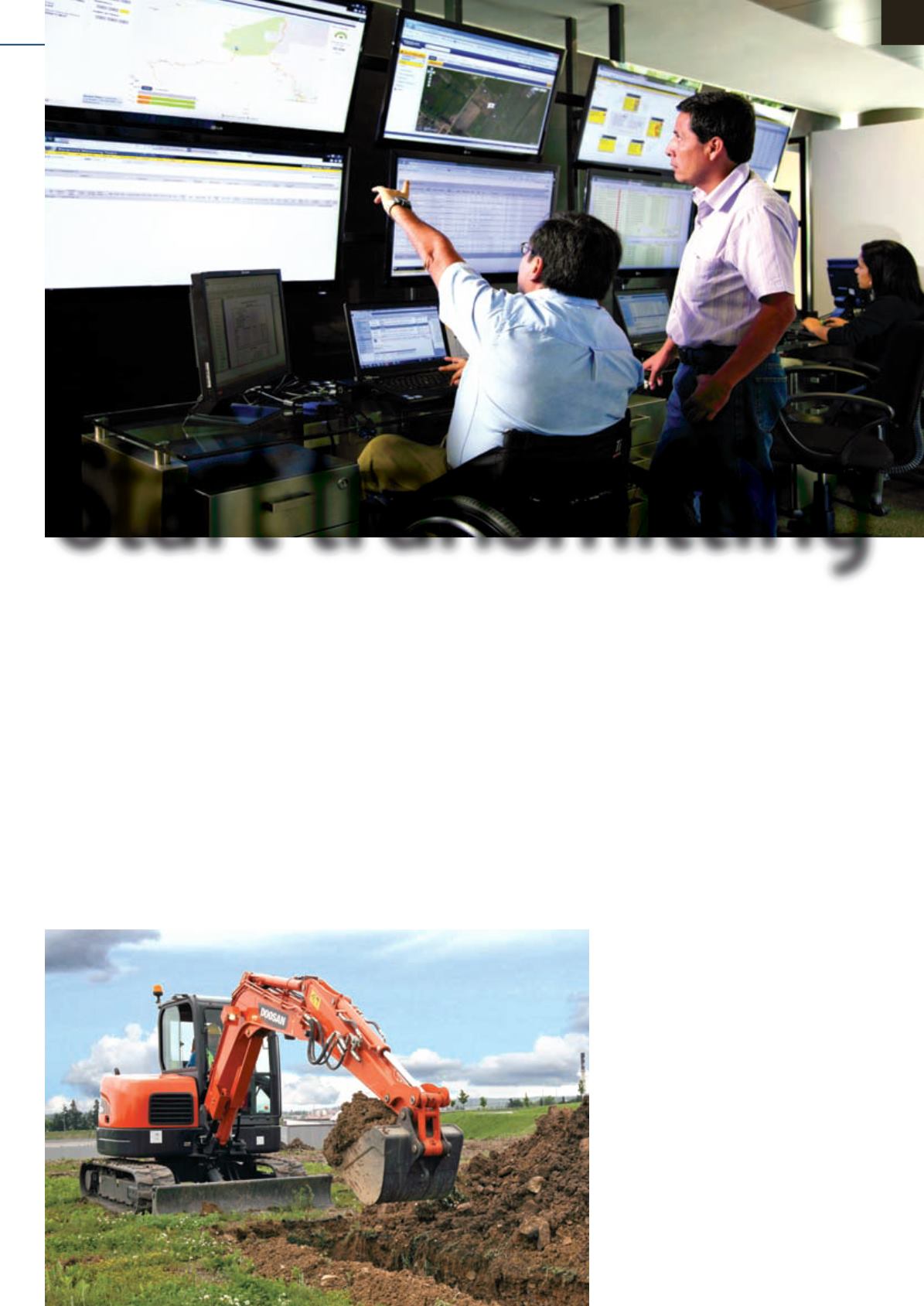
41
IRN SEPTEMBER-OCTOBER 2013
¬
Start transmitting
Momentum is growing for the use of telematics systems in the rental industry. How long before it
becomes a standard part of every rental companies’ fleet management procedures? IRN reports.
T
elematics is coming your way whether you
like it or not. After all, you are using GPS
machines in your car, probably, and in your
phone, perhaps, so it would be almost perverse to
resist the use of tracking systems in equipment that
is in most cases is considerably more valuable.
The manufacturers are pushing it for several
reasons. First, it’s a genuinely useful service
that they can offer their customers. Second, the
technology allows them to track machines in the
field and anticipate (and generate) after sales service
business, including replacement of parts. Third,
knowledge of how machines are being used helps
them design future machines, identify problems and
understand the behaviour of end users.
For rental companies, of course, knowledge of
where machines are, how they are operating, and
when they might be moving when they shouldn’t be,
is part and parcel of the fleet management function.
Modern telematics just allow rental companies to do
that task much more accurately than before and, of
course, in real time.
Many manufacturers are offering telematics
systems to their customers, and several have started
to do so recently. Wacker Neuson, Case, Hyundai (in
2010), New Holland, Manitou and Doosan Infracore
with its Vision GPS system are among those who have
recently added telematics to their product offerings.
(Doosan Infracore also announced a telematics link-
up with Orbcomm as
IRN
was going to press.)
New Holland Construction, for example, is now
offering its FleetForce system in two versions, each
with a three year subscription: a ‘Basic’ subscription
is available for the compact line and offers key-on,
motion detection and GPS tracking, while for the
heavy line there is the ‘Advanced’ package, which
integrates with the machine through its CAN-bus
data system to track an extensive list of operating
data.
Massimiliano Sala, New Holland’s telematics
product manager for Europe, highlights the value of
the system to rental companies in providing machine
performance data; “you can show the customer
the rental machine’s actual fuel consumption and
give him the average so he can compare it to other
models he is considering renting.”
Hyundai’s Hi-Mate is standard equipment on all its
wheeled loaders and excavators with an operating
weight of 14 t or over. It can be used over the entire
lifetime of a machine, and use of the system is free
for the first two years of ownership.
Hyundai says rental fleets will appreciate in
particular the alerts for maintenance requirements,
with the system monitoring scheduled intervals for
exchange of filters for fuel, hydraulic oil and air
intake.
SiteWatch from Case
The new Case system, SiteWatch - like New Hollands’
FleetForce - offers two options, Basic for backhoe
loaders, compact tracked loaders, skid steer loaders
and midi excavators, reporting every two hours, and
Advanced, which is supplied with dozers, wheeled
loaders, crawler and wheeled excavators, and sends
data every 10 minutes. Both subscription packages
have a three-year durations, with extensions
available through the dealer spare parts channel.
SiteWatch will be available as an option on some
models directly from the factory, or customers can
order it as a dealer-installed accessory, with specific
kits available for various model ranges.
It is worth noting that Case is also offering a
Cat dealer Ferryros in Peru, Guatemala and El Salvador
manages a fleet of 3900 machines, including around 600 units
in its own rental fleet, through Product Link. The electronic
data is combined with other monitoring elements, such as
fluid analysis and field inspections, and delivered to clients
by a contact centre, helping them manage their fleets and
preventing unexpected failures.
Customers can sign up for one, three or five year
contracts for Doosan’s Vision GPS telematics system.
ASSET TRACKING


